#falkland islands
Text
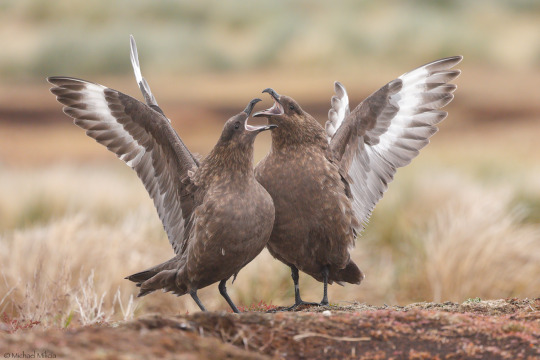
Antarctic Skua aka Brown Skua (Stercorarius antarcticus) raising a major ruckus, family Stercorariidae, order, Charadriiformes, Falkland Islands
photograph by Michael Milicia
#skua#seabird#stercorarius#stercorariidae#bird#ornithology#south america#falkland islands#animals#nature
471 notes
·
View notes
Text

Plate II. Discovery reports. 1941. Falkland Islands,
Internet Archive
#starfish#aquatic life#oceanography#marine biology#nature photography#sea stars#nemfrog#1941#1940s#falkland islands
515 notes
·
View notes
Photo

Falkland/Malvinas; Which countries should the islands belong to?
by maps.interlude
69 notes
·
View notes
Text

Stanley, Falkland Islands: Stanley is the capital of the Falkland Islands (Islas Malvinas), a remote South Atlantic archipelago. The Historic Dockyard Museum has galleries devoted to maritime exploration, natural history, the 1982 Falklands War and Antarctic heritage. By the waterfront, a whalebone arch stands near the entrance of Christ Church Cathedral, which was built in the late 1800s. Magellanic penguins gather at nearby Gypsy Cove. Wikipedia
55 notes
·
View notes
Text

Black-browed Albatross (Thalassarche melanophrys) in Falkland Islands
Photographed by Luis Solano Pochet
#upl#photography#wildlife photography#Luis Solano Pochet#Black-browed Albatross#Thalassarche melanophrys#animals#birds#albatross#Falkland Islands
47 notes
·
View notes
Photo

South American Commerson’s dolphin Cephalorhynchus commersonii commersonii
Observed by pleistocene, CC BY-NC
#Cephalorhynchus commersonii commersonii#South American Commerson's dolphin#Cetacea#Delphinidae#cetacean#dolphin#South America#United Kingdom#Falkland Islands#Atlantic Ocean
69 notes
·
View notes
Text
Flag of the Federation of Patagonia
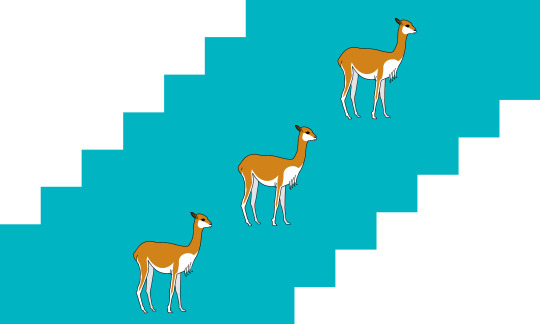
This is the flag of the Federation of Patagonia. It comes from a world where Britain conquered Argentina and Uruguay in the early 19th Century. Patagonia is a highly developed nation, and is often referred to as the Canada of the Southern Hemisphere. Patagonia also includes part of southern Chile. Chile has never forgiven Patagonia for annexing this land. Though, this occurred during the days of direct British rule. The Falkland Islands are considered indisputably Patagonian territory.
Like Canada, Patagonia is the result of the bending of two European peoples. In this case, British and Spanish. However, also like Canada, said people have historically had their tensions.
Northern Patagonia has historically been the heart of Hispanic culture. Meanwhile, Southern Patagonia has historically been majority Anglo. The name Patagonia used to refer to the region that became the southern provinces, but grew to refer to the nation as a whole. The ruling Anglos felt that Argentina and Plata were too Spanish for their taste. Hispanic Patagonians were pushed further and further north for much of the 19th Century. In fact, Buenos Aires and Montevideo used to be majority English-speaking cities. Though, Spanish speakers still accounted for a healthy forty percent of Buenos Aires and Montevideo’s population. Patagonia also experienced far less Italian immigration than Argentina did in our world. Catholic Italians weren’t eager to move to a colony of Protestant Britain. Subsequently, Patagonian Spanish has much less Italian influence than Argentina Spanish of our world. The northern provinces, initially, tended to be poorer than their southern counterparts.
Things would begin to shift starting in the 20th Century. Industry began to invest in the northern provinces of Patagonia. The influx of industry lead to an increase in wealth among Hispanic Patagonians. Several baby booms occurred during this time, ensuring that Hispanic culture would survive in Patagonia. Hispanic Patagonians made major political gains in the Patagonian parliament. Bilingualism became official government policy starting in the 1950s. Packaging is required to be printed in both English and Spanish, signs are printed in both languages, and all government documents are printed in both of the official languages. There are also numerous Spanish-language schools and universities, though most are located in the Hispanic-majority northern provinces.
Patagonia remains culturally divided among geographic lines. However, tensions have relaxed between Anglo Patagonians and Hispanic Patagonians. Patagonia is also home to immigrants from throughout the world, and prides itself on being a refuge for those seeking better lives. Patagonia has a friendly rivalry with Canada. Canada is referred to by Patagonians, with tongue planted firmly in cheek, as the Patagonia of the Northern Hemisphere.
The flag was officially adopted in the 1970s. Prior to that, Patagonia used a British Red Ensign. Care had to be taken, when designing the new flag, not to favor Anglos or Hispanics. The colors evoke the landscape of Patagonia. The white represents the snow-capped mountains, while the ice blue represents the glaciers. The shape is meant to evoke the textile work of Indigenous Patagonians. The three guanacos were chosen as a symbol beloved by Patagonians of all cultures. In fact, the guanaco is the official mammal of Patagonia.
Link to the original flag on my blog: https://drakoniandgriffalco.blogspot.com/2023/02/flag-of-federation-of-patagonia.html?m=0
#alternate history#flag#flags#alternate history flag#alternate history flags#vexillology#alt history#Flag of the Federation of Patagonia#Patagonia#Britain#Argentina#Uruguay#Chile#South America#Great Britain#United Kingdom#UK#falkland islands#falklands
33 notes
·
View notes
Text
These wolves are well known, from Byron's account of their tameness and curiosity, which the sailors, who ran into the water to avoid them, mistook for fierceness.
"Journal of Researches into the Natural History and Geology of the Countries Visited During the Voyage of H.M.S. Beagle Round the World, 1832-36" - Charles Darwin
#book quote#the voyage of the beagle#charles darwin#nonfiction#wolves#canis antarcticus#falkland islands wolf#falkland islands#john byron#tame#curiosity#sailors#escape#water#mistaken identity#fierce
37 notes
·
View notes
Text

Harrier jets concealed with cargo containers en route to the Falkland Islands, 1982
#Falkland Islands#Hawker Sidley#Harrier#VTOL#fighter jet#military#Royal Navy#Royal Air Force#RAF#war#Britain#UK#Argentina
362 notes
·
View notes
Text
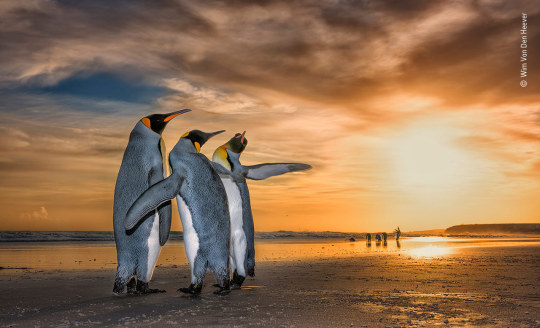
Three Kings - King penguins captured in the Falkland Islands. Wim van den Heever.
17 notes
·
View notes
Text

Argentine planes attack British vessels during Falklands War
18 notes
·
View notes
Note
Could you do Cobb’s wren? :D
Mais bien sur mon petit chou.

Cobb's Wren (Troglodytes cobbi), family Trogolodytidae, order Passeriformes, found in isolated locations of the Falkland Islands
This species was once thought the be a subspecies of the House Wren, but is now considered to be a distinct species. They are very closely related, probably sharing a common ancestor with the House Wren (or having descended from a population of House Wrens).
photograph by Andres Vasquez Noboa

photograph by Cindy Marple
239 notes
·
View notes
Text
Watch out!
7 notes
·
View notes
Photo
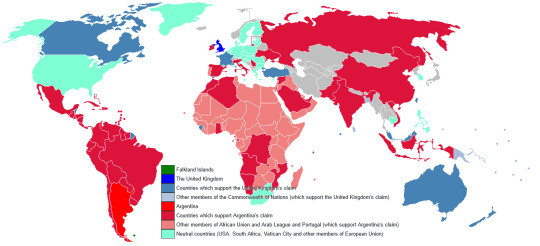
International position on the sovereignty of the Falklands
125 notes
·
View notes
Text
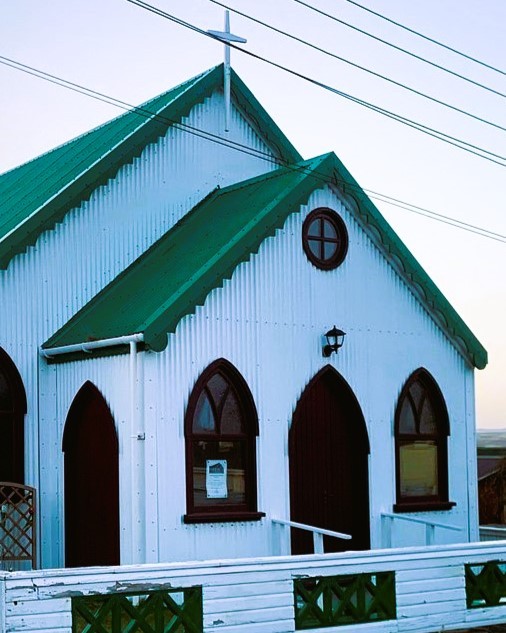
Tabernacle Free Church, Stanley, Falkland Islands: Tabernacle Free Church is next to Cortley Hill and is located in Falkland Islands. The Tabernacle United Free Church is an evangelical church. It was established in 1899. The building was sent to the Falkland Islands by the famous Victorian Baptist preacher, C.H. Spurgeon, and is named after his church, the Metropolitan Tabernacle, in London.
34 notes
·
View notes
Text
Argentina waging war over some useless islands they have no legal claim over, which had no indigenous inhabitants before the British came, and which are entirely populated by brits, under the excuse that British Imperialism is bad, at the same time that they're oppressing indigenous Mapuche and other indigenous peoples, is kinda funny.
7 notes
·
View notes